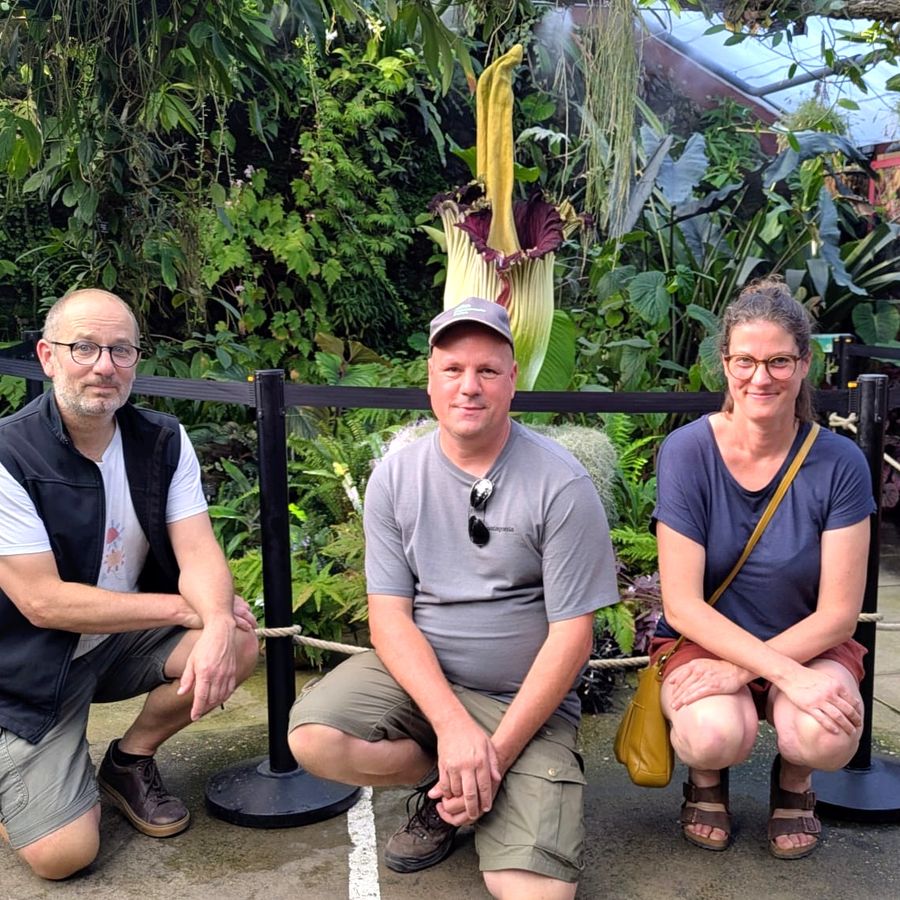
[Science News] - Éros, a proud ambassador of Meise Botanic Garden in Nancy
 For several days, all eyes were on “Éros.” This spectacular titan arum (Amorphophallus titanum), housed at the Jean-Marie Pelt Botanical Garden in Nancy, had been preparing for its much-anticipated bloom. The flowering finally began in the evening of June 18, after the public had been able to follow its impressive daily progress online through the Nancy Botanical Garden’s website.
For several days, all eyes were on “Éros.” This spectacular titan arum (Amorphophallus titanum), housed at the Jean-Marie Pelt Botanical Garden in Nancy, had been preparing for its much-anticipated bloom. The flowering finally began in the evening of June 18, after the public had been able to follow its impressive daily progress online through the Nancy Botanical Garden’s website.
Now 7 years old, Éros reached a height of 162 cm and weighed in at 21 kg. Its bloom is a rare and spectacular event. The titan arum produces the largest inflorescence in the plant kingdom… but it only lasts 2 to 3 days. You have to be there at just the right moment to witness this fascinating phenomenon — and to smell the strong, corpse-like odor the plant emits to attract its natural pollinators: large beetles.
From Meise to Nancy
This exceptional moment was shared by three staff members from Meise Botanic Garden (from right to left in the photo): Sarah Le Pajolec, Stijn Stappaerts and Olivier Maurin, all specialists and passionate about this plant family. Their presence in Nancy was no coincidence: they were attending the annual meeting of the European Aroid Society, hosted this year by the Jean-Marie Pelt Botanical Garden. The perfect opportunity to admire the flowering… of a very familiar specimen.
Because Éros is no stranger to Meise Botanic Garden — in fact, it originates from there. This specimen is one of three young plants donated to Nancy in 2018 as part of a collaboration between the two institutions. It comes from Meise’s titan arum collection, which now includes several dozen specimens at various stages of development. Stijn and Sarah, horticulturists at Meise, were even present at the “birth” of this plant several years ago.
Olivier, for his part, is conducting scientific research on the Araceae, the arum family. His visit to Nancy had a research purpose: “I plan to collect a few samples from the greenhouses of the Nancy Botanic Garden for DNA analysis, and to meet with colleagues to discuss our ongoing research on the evolution of the Araceae,” he explained. “We’ll also be talking about exchanging living plants, with the aim of cultivating some of them as part of a project focused on the tribe Culcasieae — a group within the Araceae — and studying their development and growth architecture.”
A plant heritage to preserve
The titan arum is native to the tropical rainforests of Sumatra, Indonesia. Today, it is listed as endangered by the International Union for Conservation of Nature (IUCN), which estimates that fewer than 1,000 mature individuals remain in the wild. The massive destruction of its natural habitat — due to expanding oil palm plantations, logging, and wildfires — poses a serious threat to its survival.
By cultivating, studying, and sharing titan arums, botanical gardens like those in Meise and Nancy play a crucial role in the conservation of this emblematic species. Beyond the botanical spectacle, the blooming of Éros is also a symbol of cooperation, horticultural expertise, and commitment to conservation.



